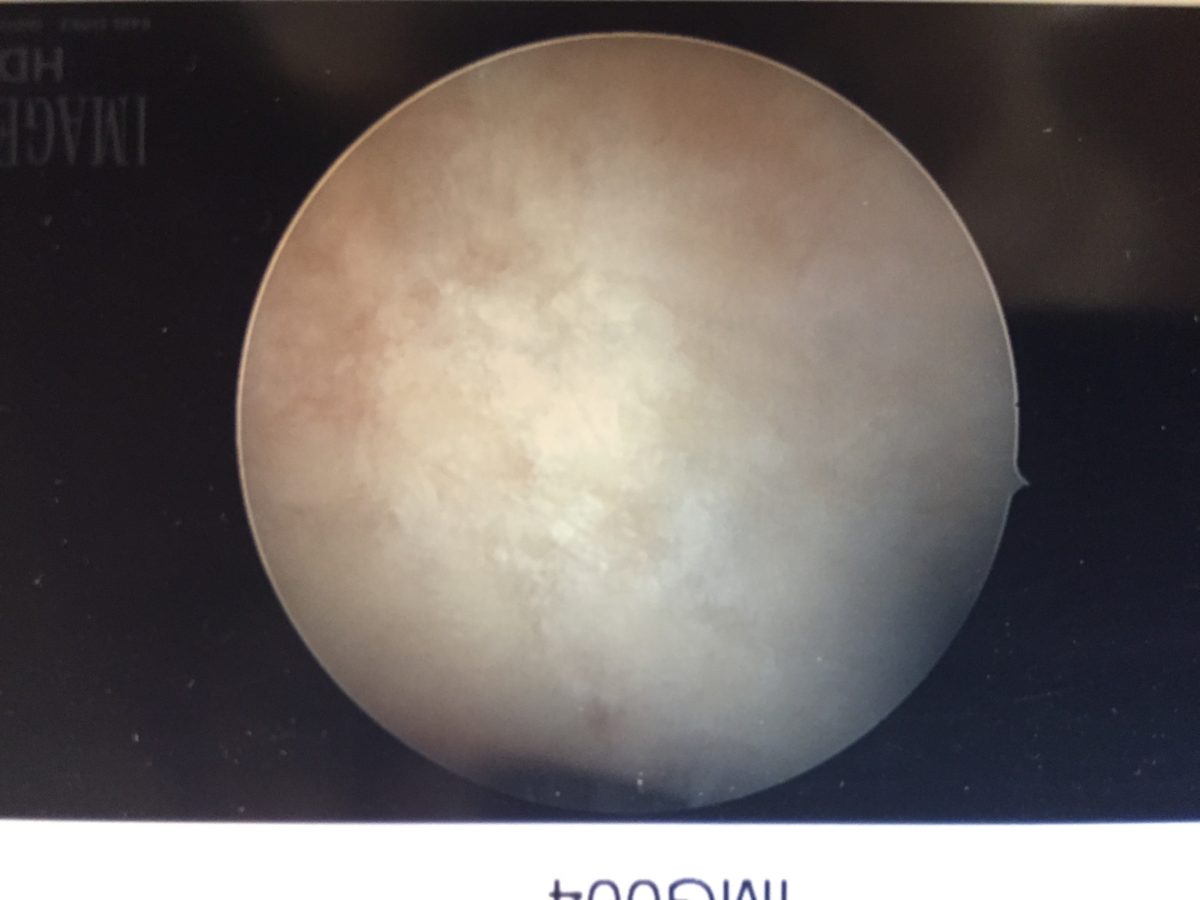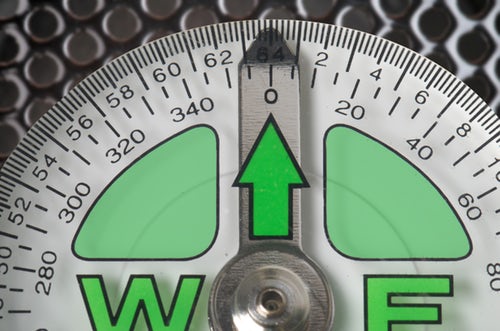A funny thing happened on the way to my knee surgery. Something wonderful and rather miraculous.
But I still don’t know when it happened.
Let me explain.
A little history—
As a competitive gymnast, I put my knees—and body—through the contortion and compression ringer. Way back in high school I was slapped in a thigh-high to ankle leg immobilizer because of excruciating knee pain and unceremoniously diagnosed with “chondromalacia,” a condition that develops when the smooth, lubricating underneath surfaces of the kneecap get damaged or wear down from…well…wear and tear. At fifteen, I was already experiencing severe wear and tear.
The pain kept me from sleeping. I couldn’t find a comfortable position for it. Keep it bent too long, and I’d have to straighten it out to get it to calm down, at least a little. I needed to sit on the aisles for theater and movie attending because keeping it bent, with the kneecap surface grinding into my femur, was intolerable. Changes in air pressure exacerbated the pain, as did lying out in the sun too long. Adding any excess poundage to my medium frame also worsened the problem.
The condition was still giving me fits in college, and my team physician prescribed 7 aspirin 3 to 4 times a day. It certainly reduced the inflammation, but I was too exhausted from anemia to stay awake or experience discomfort. That was a rough college semester.
Athletic Training to the rescue—
Once I completed my athletic training degrees (B.S. and M.S.), I understood what my “mechanism of injury” (cause) was and how to deal with it and became a specialist in the biomechanics of the lower extremity and learned how to treat my own knees as well as my patients’. I developed a knee treatment and exercise protocol to keep my legs strong and avoid further injury.
But I couldn’t reverse the damage done. And while hiking the sometimes-brutal landscape of the Camino de Santiago last fall, my kneecaps (and femur) once again fell victim to the ravages of bone-to-bone grinding. I ended up hobbling (yes, HOBBLING!), into Logrono, our last town on our first journey.
Seeing a doctor—
After our return from the Camino, I made an appointment to see a local orthopedic doctor that specializes in regenerative medicine of the joints. Maybe he could help me?
After examining my x-rays, and pointing out the frayed surfaces of my kneecaps, he said he could probably help me regenerate some of that surface cartilage through stem cell injections. Cells extracted from my own tummy fat. (How wonderful that they’ve found something useful for it!)
Because the cost is exorbitant, and insurance companies won’t pay for it, I’d need to save to have the procedure, which I hoped to do last month, after I’d made enough recovery from my November toe bone spur-removal surgery.
But something happened during the rehabilitation from that bone spur. Either I put too much pressure on the right leg, and damaged my meniscus; or an already-damaged meniscus was further eroded during my rehab. One Friday back in January, I saw my stem cell doctor again, told him my right knee felt as though it was hanging by a thread, and wondered what he suggested. He said he wanted to get a look inside the knee to see what was going on. That meant an MRI, which he ordered. (That’s what I hoped he would do.)
But the following Monday afternoon changed all my plans.
On the way out my front door to get into the car and drive to Phoenix for a three-day Crisis Management seminar, I finished off what I’d started.
It didn’t take much. It often doesn’t, especially when you get to a “certain age.” I stepped backward off the landing, planted my right foot, turned the key in the lock and pivoted on my planted foot.
Bad move. And a ripping sound toward the back of my knee confirmed it.
After crawling back into the house, (wailing in pain and frustration to my two attentive and sympathetic dogs), icing, and awaiting my husband’s return so he could take me to the after-hours clinic, I got my MRI moved to “stat,” and slid through the magnetic tube that Friday. The following Tuesday I was back in my doctor’s office.
“Good news,” he started, “is that you don’t have arthritis in the knee joint.” I was thrilled, especially after a grizzled Physician’s Assistant with no bedside manner assured me in the after-hours clinic that I had arthritis and my meniscus had to be “mush” due to my age. It meant no knee replacement necessary, for the time being, at least. Then he continued. “But you do have a meniscus tear. They’d normally just let it go, but you have a flap on yours. They’ll need to cut that out, so the knee won’t lock up on you during activity.”
Since he doesn’t do surgery, he recommended another doctor, a believer in stem cell therapy. My doctor hunted him down and brought him back to the room. (Impressive service!) The surgeon told me it was an odd tear (of course; I don’t do anything “normally”) and there wasn’t much to be done but snip that flap off. “And clean up anything else I find in there.”
I knew what that meant: clean up any of the chondromalacia debris. I wasn’t in hurry. Wanting to build some strength in my legs before undergoing the knife, I scheduled surgery for six weeks later.
The surgery—
That morning, Chris said he’d never seen anyone more ready and excited to have knee surgery in their life. True. I was excited to find out what was going on there, myself. I sort of felt as though I had this morbid desire to use myself as a guinea pig. I chatted up a storm with everyone. Even the anesthesiologist and I got into a discussion about walking the Camino de Santiago. Fifteen minutes later the procedure was over. They’d blocked out an hour.
Chris had just settled himself into doing work on his computer in the waiting room when my surgeon bounced down the hall toward him, a jubilant smile spread across his face. “Come in here,” he said, as he waved Chris toward a private consultation room.
The surgeon tossed the glossy pictures of my internal knee anatomy toward Chris. “Look at this!” he gushed. “I’ve been doing this a long time, and I’ve never seen anything like it.”
Chris pretended to know what he was looking at as the surgeon pointed out the structures. “See her ACL (anterior cruciate ligament)? That glossy area indicates it was damaged, and then healed. That’s remarkable. And see the color of the ligament itself? It’s shape?” Chris nodded as he stared at the picture. “That’s what a ligament of a twenty-year-old athlete looks like!”
Chris’s gaped at the surgeon, who continued. “And, aside from the tear, her meniscus are also in near-perfect condition—healthy, good density. All I had to do was snip off that flap. And see the fibers branching out from the tear edges? It’s healing itself!”
Chris threw out a couple of “Wow” comments as the doctor continued. “And see the smooth cartilage on the bones? She has NO arthritis. Absolutely amazing!”
Then the doctor flipped to the second sheet of pictures. “Now there’s the war zone!” He pointed to the pitted kneecap surface, with the fragments of sheared and scraped-off cartilage hanging off the kneecap and floating in the joint fluid. “Typical gymnast knee. Lots of brutal shear force. I just cleaned off the mess. The good news is that she actually has about 1/3 of the surface cartilage left for stem cells to bond to. She’s a prime candidate for the treatment!
“I don’t know what you guys are doing, eating or exercising or good living. But whatever it is, keep doing it!”
Recovery—
Chris couldn’t wait to share the good news. I was thrilled. At my post-op appointment, the surgeon confirmed what he told Chris and said he didn’t think I’d ever need a need replacement.
I lay on the couch post-surgery and bragged to anyone who called to check on me that I had the knees of a 20-year-old. But it didn’t take me long to think a little deeper about what had transpired.
I’d turned 61 just four days prior to surgery. Twenty years old was four long decades ago. Even if I took into account:
- my pension to eat well and consume a lot of anti-inflammatory foods;
- my liberal use of anti-inflammatory meds during my twenties;
- the likelihood that I’m blessed with good genes, (my mom is 97 ½ and without any skeletal problems);
- and my athletic escapades and genetic bent toward strong, powerful muscles that hold joints together;
I can in no way account for all of those factors subtracting 40 years from the age of my knee.
Somewhere along the line, some heaven-sent miracle arrested the aging of my knee; or I received a healing miracle sometime during the last 40 years.
I won’t know this side of heaven what the answer is, but I’m SOOOOO grateful. I probably won’t need my knee sawed out and replaced with a bionic, titanium alloy model. Something that’s so often done these days that it reminds me of assembly-line surgery.
Healing process—
So now I’m working on rehabilitating my knee. Recovery is creeping along much more slowly than I predicted, but I’m guessing that’s all in God’s plan too. Another lesson in slowing down, trusting. Practicing peace in the face of incapacity and pain.
Surgery recovery has a way of putting life into perspective. It whittles life down to what’s important and really urgent.
Turns out not much is really urgent, although we elevate a lot of things in our lives to urgent. Sometimes I think we do that to make our lives seem more relevant.
And we get brainwashed into believing that unless our lives seem relevant, then we aren’t relevant.
I’m also amazed once again at how God has created the body to heal itself. Sometimes that’s a slow process that needs cooperation. Otherwise, healing can go haywire. I confess I’m not always a patient person, so the healing process is also a lesson in patience, another product of the Spirit’s fruit.
Any way you look at it, it constitutes a miracle.
There’s a lot to be learned from an injury.
Youthful knees or not!
Photo:
By the way, the above picture is not a photo of the moon. It’s the inside of my knee. The damaged part of it. The grayish area is where the surface cartilage has been worn down, “like sandpaper,” the surgeon said. Gymnastics. All of the surface should be pearly white.
Hopefully it will become that way if and when I have those stem cell injections!
I’ll be praying for another miracle!
Until next week,
Shalom,
Andrea
“Certainly there was an Eden….We all long for it, and we are constantly glimpsing it.” —J.R.R. Tolkien


